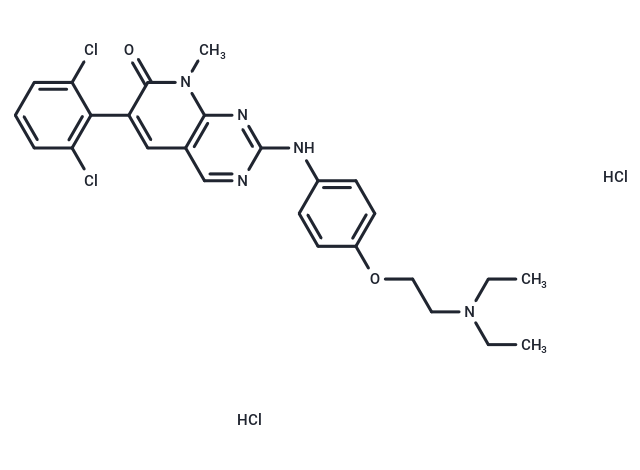Shopping Cart
Remove All Your shopping cart is currently empty
Your shopping cart is currently empty
PD-166285 is an effective and broadly active inhibitor of protein tyrosine kinase.

| Pack Size | Price | USA Warehouse | Global Warehouse | Quantity |
|---|---|---|---|---|
| 1 mg | $133 | 35 days | 35 days |
| Description | PD-166285 is an effective and broadly active inhibitor of protein tyrosine kinase. |
| Targets&IC50 | Myt1:72 nM (IC50), Chk1:3.433 μM (IC50), Wee1:24 nM (IC50) |
| Synonyms | PD-166285 |
| Molecular Weight | 585.35 |
| Formula | C26H29Cl4N5O2 |
| Cas No. | 212391-63-4 |
| Relative Density. | 1.31g/cm3 |
| Storage | Powder: -20°C for 3 years | In solvent: -80°C for 1 year | Shipping with blue ice/Shipping at ambient temperature. |
| Solubility Information | DMSO: Soluble |
| Size | Quantity | Unit Price | Amount | Operation |
|---|

Copyright © 2015-2025 TargetMol Chemicals Inc. All Rights Reserved.